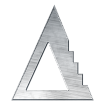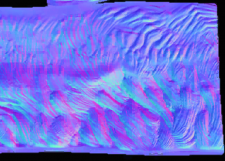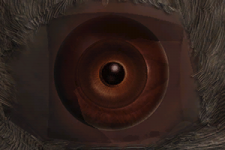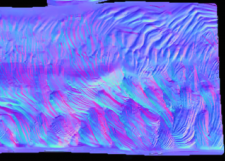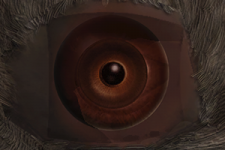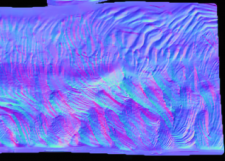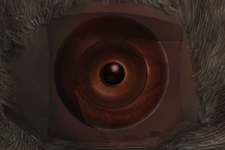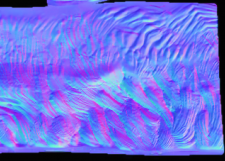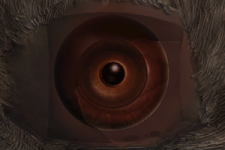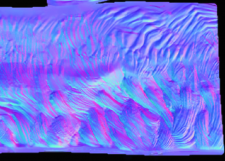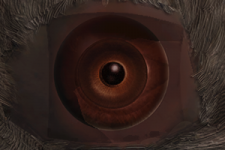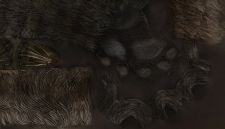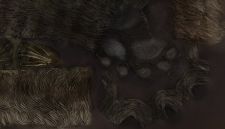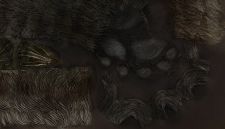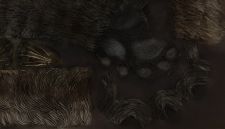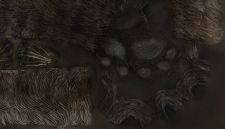User:TechAngel85/Sandbox3: Difference between revisions
TechAngel85 (talk | contribs) |
TechAngel85 (talk | contribs) |
||
| Line 334: | Line 334: | ||
: '''Recommended for Alpha Channel:''' Fire Alpha or GameAI | : '''Recommended for Alpha Channel:''' Fire Alpha or GameAI | ||
=== Human Skin Textures === | |||
: '''BC/DXT Model Recommended:''' DEDXT | |||
: '''Recommended for Diffuse:''' NMKD Superscale SP | |||
Revision as of 19:53, May 30, 2022
This document describes the methodology as well as general knowledge of creating upscaled textures for Bethesda games.
What makes TEVT different?
The majority of upscales available have been bulk produced. This means the majority (or all) of the textures where treated equally by applying the exact same process to all textures. This works in general, however, not all textures are equal. Some may have less or more artifacting, some may have issues never corrected by Bethesda and other may require scarcely any to no processing. Then take into account that some models work better, or more often worse, for specific types of texture vs other models.
To get consistent quality and results, TEVT handles each texture individually. A lot of testing was put into figuring out what models work well for specific texture types. Thus, each texture was examined and processed according to what past results proved to the best method for the texture type. However, each step is examined and the process adjusted for each texture, as needed. This meant a lot of experience was gained throughout the process of creating the mod. As the work was completed, that knowledge and process was documented to create this informational resource.
Setup
Complete system setup for upscaling will not be covered here. The Upscale Wiki has all the resources users will need to get set up and started.
- Windows Setup: ESRGAN Installation Guide for Windows
Once setup is complete, users will need an interface for ESRGAN. It can be ran from command line, but most users will want a GUI.
- Step Recommends: Cupscale
- However, Image Enhancement Utility is also very good.
- Take some time to get to know the interface of choice. Users should be sure they visit the settings and apply any desired changes.
After the GUI of choice is installed, models will need to be downloaded and installed. These can be found across the web using a good search query, however, the Upscale Wiki hosts a fairly large database of models with links. As always, follow safe internet practices and scan any files before use.
BC/DXT Decompression Model Reference
These models were used for removing artifacts from previous compressions. This processing inherently causes some detail loss in the range from very little up to a medium loss, depending on the model used. The images are blown up sections of textures. They show how each model handles the compression artifacts on a small section of fur on a normal map and the eye section of a diffuse map. Results will vary based on the texture content, but users can get the general sense.
General Purpose Decompression Models
These are general purpose models, which work on most textures including alpha channels, normal maps and diffuse maps.
DEDXT
Use for textures with light artifacting. This is a model for light-weight cleanup and is often used for noisy textures.
Color: nearly 1:1 Color Correction: Detail: nearly 1:1 Detail Correction: upscale or use Smart Sharpen to remove Gaussian
BC1 Smooth
Use for textures with medium artifacting. This is a middle-ground model and is used often. It can cause a tiny, tiny tone shift, however, the shift is so small its rarely worth correcting.
Color: nearly 1:1, nearly inconceivable tone shift. Color Correction: Detail: smoothing / blurring / light to medium loss of detail Detail Correction: upscale or use Smart Sharpen to remove Gaussian
Artifacts BC1 Free Alsa
Use for textures with medium to heavy artifacting. This is a stronger model and not used often.
Color: causes color shift in the reds Color Correction: Levels > Red Channel > adjust as necessary Detail: smoothing / blurring / medium loss of detail Detail Correction: upscale or use Smart Sharpen to remove Gaussian
DXTless Source Engine 170000
Use for textures with heavy artifacting. This is the strongest of these models and is rarely used.
Color: causes color shift as it's designed to remove green tint Color Correction: Levels > Red/Green Channels > adjust as necessary Detail: smoothing / blurring / medium loss of detail Detail Correction: upscale or use Smart Sharpen to remove Gaussian
Upscaling Model Reference
These models were used for upscaling original or cleaned textures. They are all 4x models, meaning they scale the texture to four times its original size, and produce various results. The images are blown up sections of textures. They show how each model handles the compression artifacts on a small section of bone-like, fur-like and leather-like textures.
General Purpose Upscale Models
These are general purpose models, which work on most textures including alpha channels, normal maps and diffuse maps. Results will vary depending on model used.
Deviance DigitalArt
A general purpose model that works well with many texture types. It's particularly good on fur/hair, but is used often for many other textures.
Color: causes color shift in the reds Color Correction: Levels > Red Channel > -1 to Midtone Detail: smoothing / blurring / light to medium noise reduction / produces lines from some noise Detail Correction: use Smart Sharpen to remove Gaussian
ESRGAN Skyrim NonTiled RGB
This is a fairly good model that was designed for wood textures, however, it causes a color shift that can be difficult to correct. As such, it's rarely used.
Color: causes color shift Color Correction: Detail: sharpening Detail Correction:
GameAI
This model is designed for various game textures, however, has a heavy hand with sharpening. As such, it's not used very often.
Color: causes color shift Color Correction: Levels > adjust as necessary Detail: heavy sharpening Detail Correction:
SkyrimTexV2
This model was designed for general Skyrim textures, but works best on metal, stone and wood-like textures or textures with rough patterns like leather and skin.
Color: causes color shift Color Correction: Levels > adjust as necessary Detail: smoothing + sharpening Detail Correction:
Textures Skyrim Armory Alsa
This model is designed for Skyrim armors and as such, is great for most noisy and grainy textures, such as: leather, metal, skin, wood, etc.
Color: causes color shift in the reds Color Correction: Levels > Red Channel > adjust as necessary Detail: sharpening Detail Correction: add very small amount of Gaussian blur, if needed
UniscaleV2 Sharp
This is a general purpose model good for most texture types, however, as the name suggests it's quite heavy on the sharpening. As such, it's most often used in interpolations of 10-20% to provide some sharpening, as needed.
Color: causes color shift Color Correction: Levels > adjust as necessary Detail: heavy sharpening Detail Correction: add very small amount of Gaussian blur, if needed
Alpha Channels
The models below are designed for and work best on alpha channels. Results will vary depending on model used. However, whether a general model from above is used or a specific one for alphas below, if the alpha channel is simplistic then the results will generally be comparable across all models.
FireAlpha
This model is the lightest model that can be used for alphas and produces upscales that most closely resemble their originals; for better or worse. Since the results are nearly 1:1, this model is used most often for upscaling the diffuse alpha channels.
Color: 1:1 Color Correction: Detail: nearly 1:1 Detail Correction:
Methodology
Preparation
- Open original texture in PS or image editor of choice that is DDS/BC7 format capable
- BC7 format is only applicable to Skyrim SE/AE and Fallout 4
- If Alpha exists, choose to load it as transparency
- If applicable, create a new layer from the alpha channel
- Exam layers to note the type of texture and any issues, such as compression artifacts, to determine the best models to run.
- It's common to use 3-5x zoom to visual artifacting and other potential issues.
- Save Color Map and Alpha, if applicable, in a lossless format
- The format has to be supported by the ESRGAN GUI
- The format should be: lossless / uncompressed / RGBRGBRGB / Linear (not all these will be available, just covering basis)
- Step recommends using PNG, lossless format. TIFF can usually also be used, but do not save layers.
Running ESRGAN
- Open saved images, one at a time, in ESRGAN GUI (i.e., Cupscale)
- If compression artifact cleanup is warranted, run desired model; else skip
- If this was completed, it's recommended to compare against the original to verify the result is desired
- If compression artifact cleanup was completed, open the cleaned texture in ESRGAN GUI for upscaling
- Run desired model for upscaling
Post-Processing
- Open the upscaled Color Map and Alpha, if applicable, in PS and compare against original to verify the result is desired
- Complete any post-processing required (i.e., color correction, sharpening, etc.)
- To ensure alphas are black and white, users can open Hue/Saturation in PS and remove all saturation.
- Color Maps most often require adjustments to the red channel for corrections, which can be performed via Levels in PS.
- Resize the texture to the desired dimensions
- Look out for transparent edges as the images have have developed them by this point! If they appear, simply create to copies of the original layer and merge down.
- If applicable, recombine the Color Map with its Alpha.
- Save using Nvidia Texture Tools to DDS format using BC7 / Color Map / RGBA
- Set mipmaps to Kaiser and quality Normal
- Production quality can be used, but it takes an incredible amount of CPU power. Most users can not run it without each texture taking 6+ hours to save.
- Obviously other formats can be used, and should be used if the game doesn't support BC7. However if the game does support the format, BC7 is highly recommended!
- Set mipmaps to Kaiser and quality Normal
- Open saved file to verify integrity
NOTE
If the alpha channel is blank (black or white) it will sometimes refuse to save. To force this save, simply make a 1x1 pixel in the corner of the alpha a dark/lighter shade. For example, if the alpha channel is all white and will not save. Paint a 1x1 pixel square in a corner with 90% brightness. The alpha should then be recognized as having data (is present) and will be saved.Specific Texture Recommendations
Fur/Hair
Fur and hair can be difficult to handle without losing too much detail or it causing hashing or other issues. Generally, the Deviance DigitalArt model tends to work best for these types of textures, but some experimentation may be warranted.
Noisy Textures
(creature scales/shells, some armor, some landscape, etc)
- BC/DXT Model Recommended: DEDXT
- Heavily artifacted textures can use BC1 Smooth at the cost of some detail loss
- Recommended for Diffuse:
- Interpolate:
- Skyrim Armory Alsa @ 5%
- Deviance DigitalArt @ 95%
- This interpolation will limit color shifting and provide a very small about of sharpening to the result, since Deviance tends to blur a bit.
- Corrections:
- -2 Luminosity to correct over-brightness
- Interpolate:
- Recommended for Alpha Channel: Fire Alpha or GameAI
Human Skin Textures
- BC/DXT Model Recommended: DEDXT
- Recommended for Diffuse: NMKD Superscale SP

